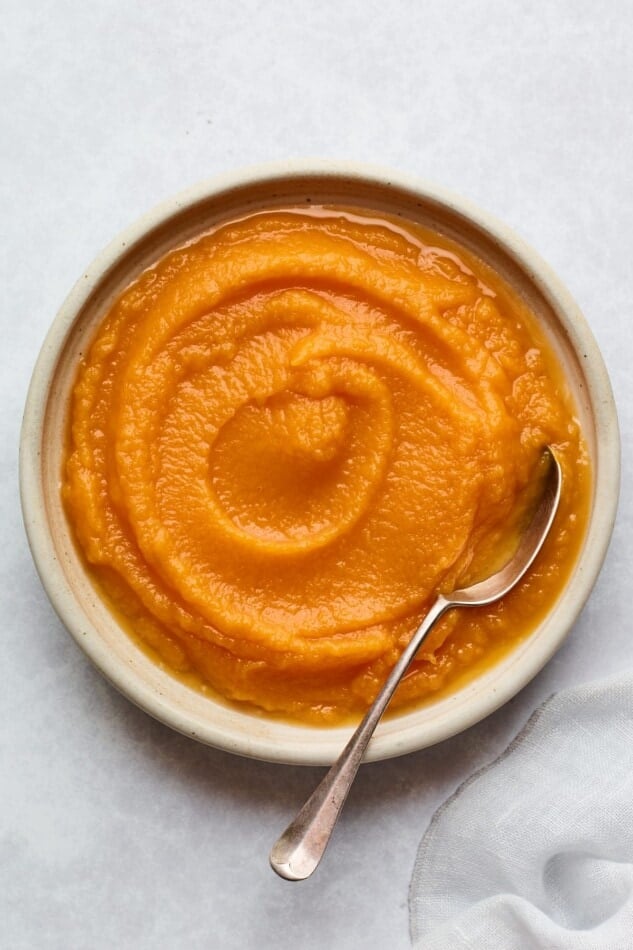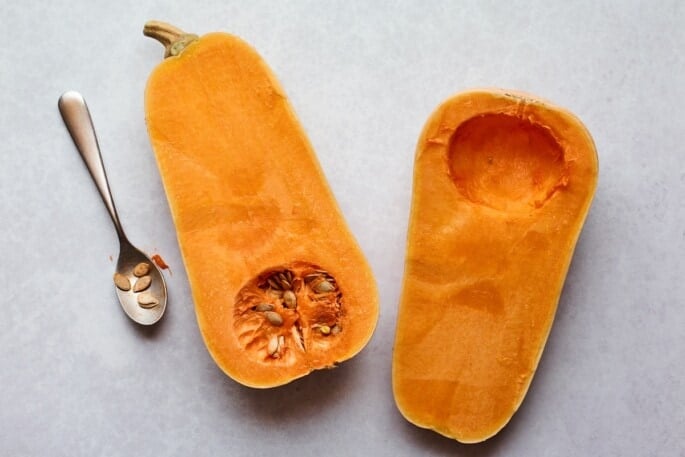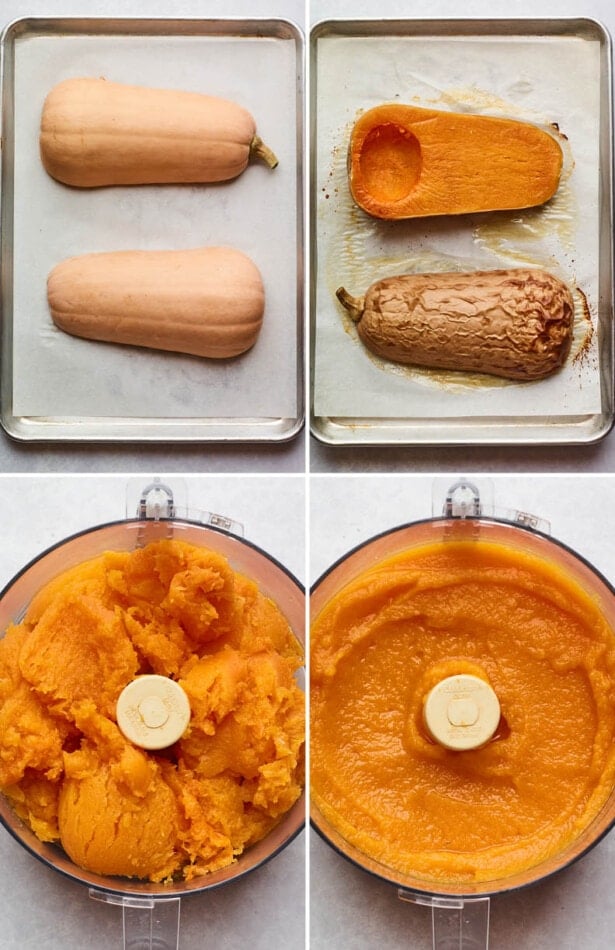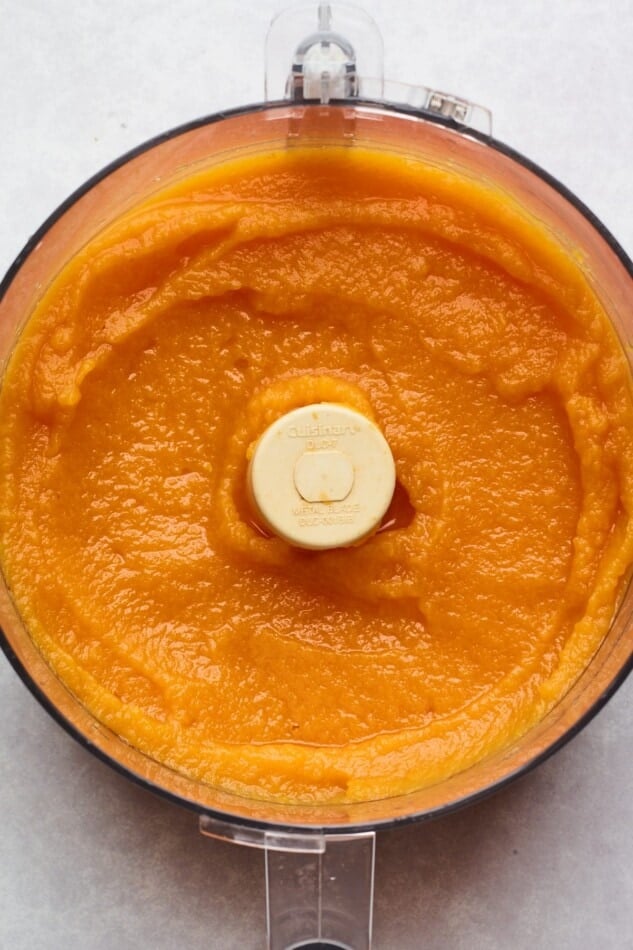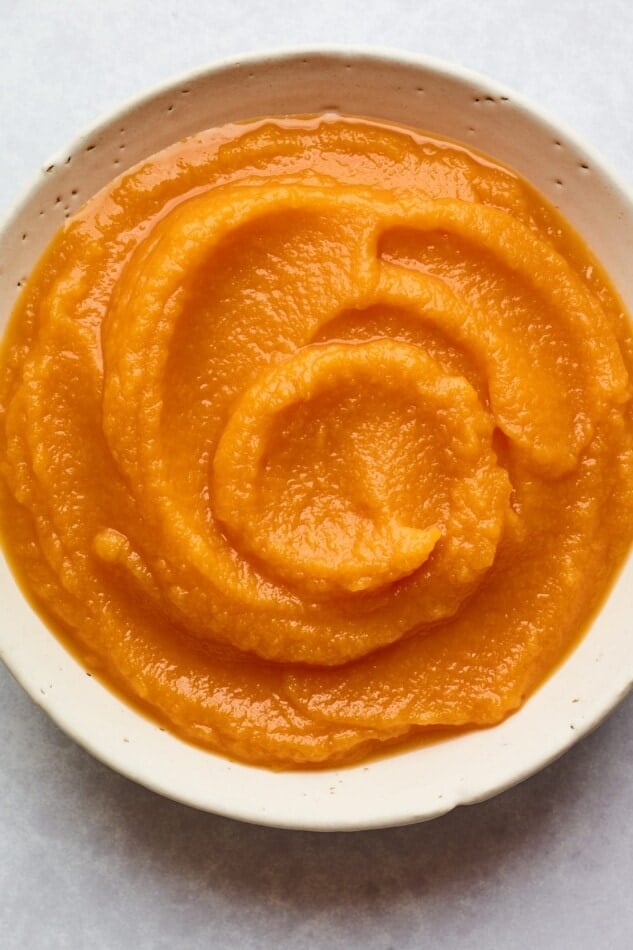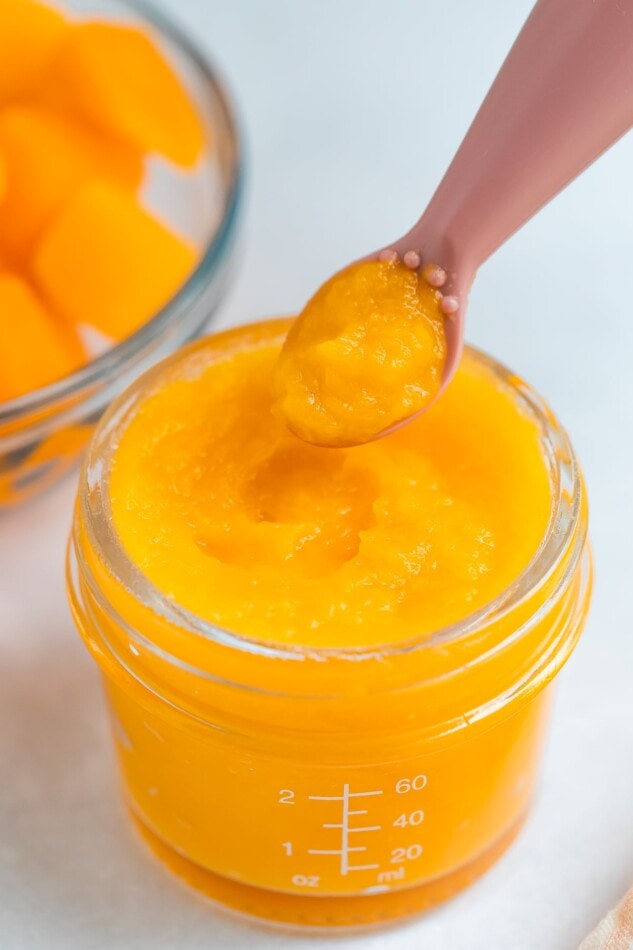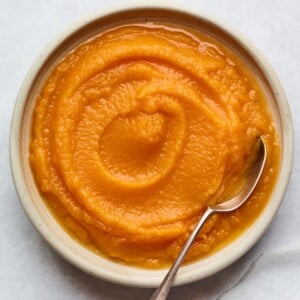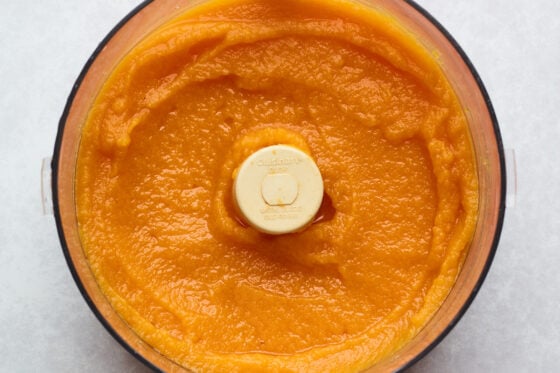5 2 Published Nov 04, 2021, Updated Nov 01, 2022
Butternut Squash Nutrients
Butternut squash is a delicious vegetable (that’s technically a fruit but we won’t get into that!) that works well in both sweet and savory recipes! It’s packed with fiber, vitamins and minerals while also being low in calories. Butternut squash has been linked to decreased disease risk and weight loss. (Source)
Buying and Storing Butternut Squash
You can usually find butternut squash year round but it’s in season in the fall and winter months. Look for a squash that is heavy for its size, has smooth, firm skin without many cuts or bruising. The bigger the base of the squash, the more seeds there will be. Store the whole butternut squash in a cool, dark spot – no need to refrigerate!
How to Cook Butternut Squash for Puree
There are a few different ways to cook butternut squash when making purees. I usually steam it because it’s one of the faster methods, but baking is also relatively easy and hands-off, it just takes a bit longer! Bake – Slice the butternut squash in half, lengthwise and remove all of the seeds with a spoon. Place the squash on a baking sheet, cut side down. I like to line the baking sheet with parchment paper or a silicone baking mat for easy clean up. Roast at 400ºF for 30-40 minutes or until the skin is a bit wrinkled and you can easily insert a fork without much resistance. Steam – You can also steam your squash! Start by peeling the squash with a vegetable peeler or knife. After peeling, cut the top and bottom of the squash and then cut the squash in half widthwise and lengthwise so the squash is quartered. Scoop out the seeds with a spoon and then chop into cubes. Add about 1 inch of water to a large pot and bring to a boil. Place the squash cubes in a steamer basket or metal colander and place in the pot. Cover and steam for about 10 minutes or until the squash is soft. Microwave – Yes, you can microwave butternut squash! Cut the squash in half and remove any seeds with a spoon. Place the squash cut side up on a microwave safe plate. Microwave on high for 8-10 minutes or until you can easily insert a fork without much resistance. Instant Pot – Another super quick way to cook squash. Cut the squash in half (lengthwise) and remove any seeds. Place the wire trivet inside the Instant Pot and add 1 cup of water. Arrange the squash halves in a single layer in the Instant Pot (you may need to do this in batches). Cook on high pressure for 8 minutes and then allow the Instant Pot to naturally release pressure.
How to Blend Butternut Squash to a Puree
Allow the squash to cool until you can hold it without burning yourself. Use a spoon to scoop out the flesh of the squash and discard the skin. When it comes to pureeing the butternut squash, I usually use my food processor or Vitamix blender, but you can also use an immersion blender, potato masher or even a fork. Food processor – Add the cooked squash to your food processor and blend until smooth. Blender – Add the cooked squash to a high-powered blender and blend until smooth. Immersion blender – Add the cooked squash to a large bowl or pot and use an immersion blender to blend until smooth. Masher – Add the cooked squash to a large bowl or pot and use a potato masher (or fork) to mash the butternut squash. This will result in a chunkier puree and is a great option if you want a little texture. It also works for serving older babies.
How to Use Butternut Squash Puree
Plain butternut squash puree is a great first food for babies. For more advanced eaters you can combine the squash puree with another puree or even add it to yogurt or oatmeal. Check out more combo ideas for baby below!Enjoy as a side – I would mix in some butter or olive oil, salt, pepper and fresh herbs. Rosemary or sage would be delicious! Sneak in some extra veggies and mix into mac and cheese. Add it to creamy hummus for extra flavor and nutrients… plus it will make it a beautiful orange color!Mix it into pancakes or waffles – follow this recipe for butternut squash pancakes!Add it to oatmeal for added flavor, color and nutrients! You could also swap the sweet potato in this sweet potato baked oatmeal for butternut squash! Use in quick breads or muffins in place of applesauce or pumpkin puree. This helps keep the oil/fat content down while still making a perfectly light and fluffy baked good.Swap the sweet potato for butternut squash puree in these sweet potato brownies or sweet potato breakfast cookies.Add it to a smoothie for some added fiber and flavor. I think it would be delicious in place of the pumpkin puree in this pumpkin pie smoothie!Mix into pasta sauce – I think it would be delicious in my vegan bolognese or cauliflower alfredo sauce.
Butternut Squash Baby Food
When you start solids with your baby, butternut squash puree is an awesome first food. You can mix it with breast milk to thin it out if needed. It’s obviously delicious on its own, but can be combined with a variety of other foods for stage 2 eaters and beyond.
Foods That Will Pair Well with Butternut Squash Puree
Any of these foods can be blended with butternut squash to make unique flavor combos!
Green veggies – kale, spinach, avocado, peasOrange veggies – pumpkin, sweet potato, carrotWhite veggies – cauliflowerFruits – mango, pear, banana, applesDairy – yogurt, cottage cheese, ricotta cheeseGrains – quinoa, oats, brown rice Meat – chicken, beefSeasonings and spices – curry, nutmeg, cinnamon
Butternut Squash Baby Food Combos Ideas
Butternut squash + apple or pearSweet potato + butternut squashBlack bean + butternut squashApple + butternut squash + carrot
How to Store Butternut Squash Baby Food
Fresh butternut squash baby food should be stored in the fridge and used within 3 days. For longer storage, I recommend freezing the squash puree! I like using silicone ice cube trays and these 4 oz glass storage containers. The ice cube trays are great for younger babies who aren’t eating as much volume because you can defrost one cube at a time. While the 4 oz jars are great for older babies who are eating more than 1 oz at a time.
How to Thaw Frozen Butternut Squash Puree
I recommend thawing frozen squash puree in the fridge the night before you want to use it, but you can also thaw it the day of with a warm water bath. It thaws quickly if you’re defrosting a small amount to serve to a baby.
More Purees to Try
Sweet Potato PureePeach PureePumpkin PureeCarrot PureeBanana PureeApplesauceStrawberry Chia Jam6 Baby Food Combinations (Stage 2)
Most Popular Butternut Squash Recipes
How to Roast Butternut SquashButternut Squash Mac and CheeseBaked Butternut Squash FriesOne Pan Tempeh Butternut Squash BakeButternut Squash SoupRoasted Butternut Squash SaladButternut Squash and Turkey ChiliRoasted Butternut Squash PastaVegetarian Sheet Pan Dinner with Butternut Squash
Be sure to check out my full collection of baby food recipes as well as all of the butternut squash recipes here on EBF.
